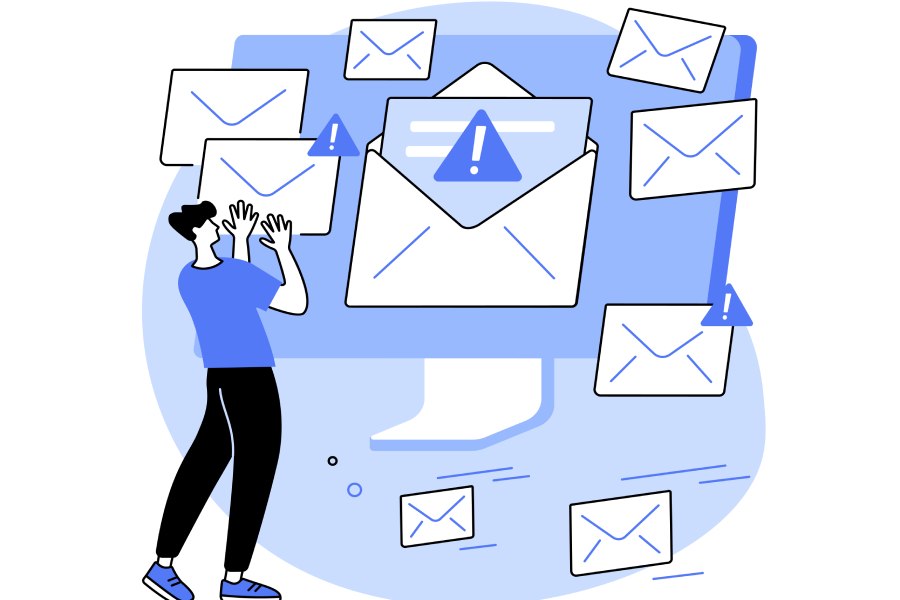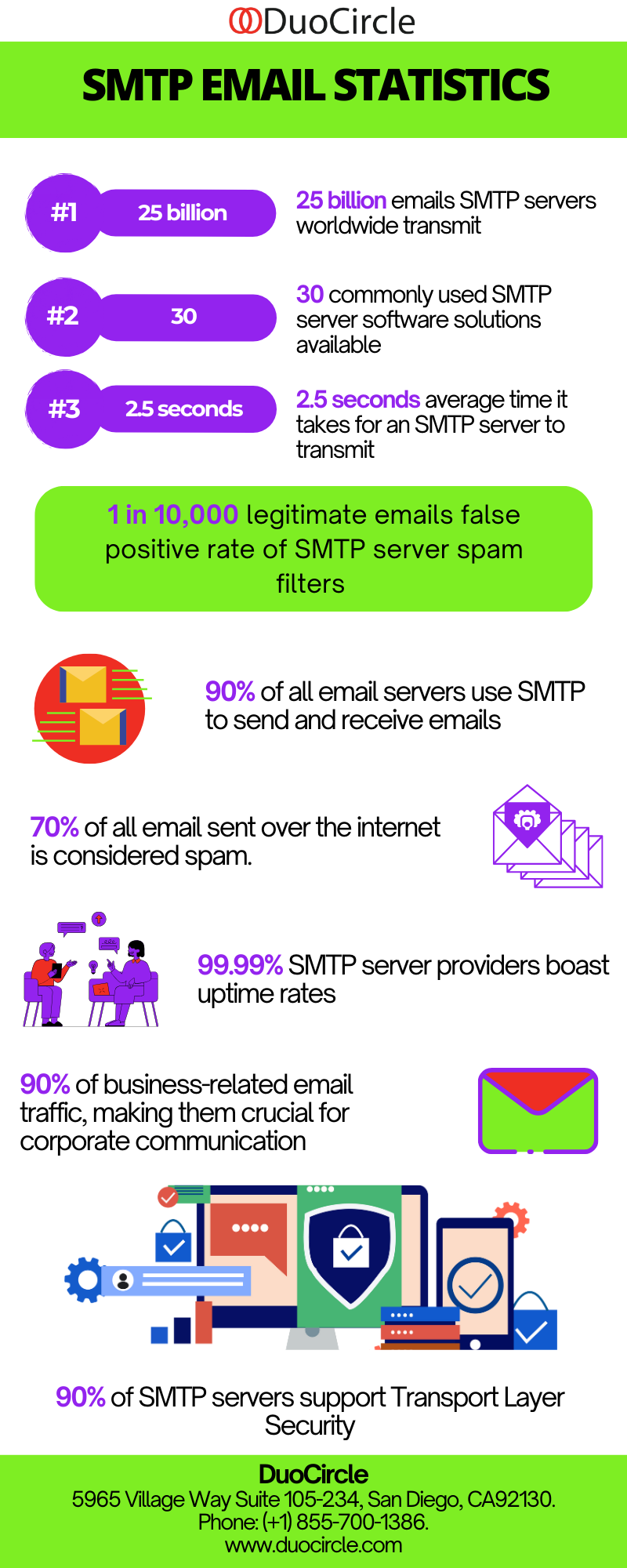While handling email marketing campaigns, one might run into various error messages. The faster a user can resolve these issues, the quicker they can resume their email campaign. Depending on the email hosting provider and mail server, the error responses may vary. For a layperson, it might not always be easy to decipher the meaning of these messages. Discussed below are some of the common email error messages a user might receive while using an outbound SMTP. The solutions for the errors are also detailed along with them to help in case anyone encounters such messages.
Receiving SMTP error codes points to some underlying problems related to email delivery. At the baseline, one needs to seek anti-phishing services to ward off the chances of attacks or intrusions in the email. Once it is secured, check out the error codes.
Common Email Error Messages And What To Do About Them
Here are some of the very commonly occurring email error messages, along with their solutions.
“IP Address Has Changed!”
Each time a user logs into their webmail account, the system records the IP address of the terminal. However, if the IP address changes while the user is logged in, the new connection fails to get recognized by the webmail as a valid one. As a result, the user would be logged out automatically. Under such situations, there will be an error message stating that the IP address has changed.
Solution
To troubleshoot this issue, log in once again. The action will get the new IP address instantly recorded. However, some users might face this issue more frequently. They need to approach this issue with a few additional steps.
- Try using a different data connection, like Wi-Fi, mobile data, etc., and log in.
- If the issue is fixed, reach out to the ISP and request them to provide a static IP address. It ensures that it would not change when the user logs into the email account.
- Alternatively, one might request the DHCP lease time to be enhanced. This action ensures that the login sessions would be of longer durations.
- Try using different email applications like Gmail, Outlook, Apple Mail, Thunderbird, etc. Email applications have nothing to do with the IP address during authentication. Therefore, making changes in the IP address wouldn’t trigger an issue.
“Authentication Failed”
This error message indicates that the email server fails to confirm the user’s email address authentication. One might encounter this message following a mistyped password. Other issues triggering this message are getting connected to a wrong server, incorrect username, or blacklisting.
Solution
Reset the password. Now check the following settings after opening the email application.
- Update the new password, ensuring that the username is the complete email address.
- Verify whether the server’s name is mail.xyz.com, where xyz.com is the domain name.
- Now examine whether the email application is working or not. In case it isn’t, there are a few more steps to carry out.
- A period of 72 hours could pass before the DNS settings function correctly after changing domain points or downgrading or upgrading the hosting plan.
- An IP address could be blacklisted at any time due to various reasons. If the issue continues even after 24 hours, examine if the local IP address is blacklisted. It happens due to several failed attempts of login in a short span. In such cases, one may use a different internet connection and try again.
“Certificate Name Mismatch”
Even when one is secured from cyber threats using phishing protection or ransomware protection as a part of the email security mechanism, one may encounter error messages related to a certificate name mismatch. It indicates that the server’s SSL certificate fails to match the expected email application’s name. This error might appear in different forms, such as ‘invalid certificate,’ ‘hostname mismatch,’ ‘untrusted connection,’ etc.
If the user has used a private SSL setting for configuring their email application but using the domain name as the mail server, the application would expect the certificate to have the domain name. Therefore, the email application sends a warning to the user that the name of the hosting server’s certificate has a mismatch with the domain name.
Solution
The user would still be able to exchange emails. However, make sure to carry out the necessary adjustments in the email application setting. It would make the system aware that the user already knows about the configuration.
“550 Sender Verify Failed”
This message is likely to appear when the inbox is full. A user might also encounter this error message if their zone editor has a wrong mail routing setting. In that case, one might face difficulties in the general functions that use the email application, such as email forwarding, email receiving, email sending, or email archiving.
Solution
In general, a mailbox comes with limited storage capacity. In case the user exceeds the limit, they need to scale up the plan. However, there are alternatives wherein the user could manage the storage space or manage the error itself, as described below.
- You can make way for additional space by deleting emails that you no longer need.
- The problem sometimes arises due to incorrect email routing. If the email routing setting is faulty, the user needs to work on DNS management and make the necessary changes.
“Stop Spamming/We Hate Spammers!”
An email user might encounter this type of error message if the email address has been blacklisted as a spammer. Often, malicious actors steal users’ credentials and send spoof emails to others using them. Threat actors do it using spear phishing, whale phishing, and other mechanisms used in data thefts. ISPs may blacklist such email addresses based on the information from external services devised to control malicious activities.
Solution
Seeking phishing protection assistance is the most logical approach to handle such issues. Presently, a significant section of enterprises seeks advanced services to ward off chances of their email credentials being stolen. Over the last 12 months, the number of phishing websites registered by Google is 27% higher than last year. Therefore, having a proper security mechanism is essential for organizations to prevent themselves from falling into such traps.
Final Words
It makes sense to use an authentic email hosting service that offers phishing protection, email archiving, Azure tenant-to-tenant migration, email backup, and other relevant services. Besides, one must use MX backup to keep the email communication path functional if the server goes down due to any reason. However, before proceeding, you must ensure to check out the provider’s support services; it must be checked they have a robust infrastructure and a comprehensive range of services so that your enterprise can remain one step ahead in managing common email issues. With dedicated assistance from a reputed platform, you would be able to troubleshoot the error messages seamlessly, thus avoiding any interruption to your business operations.


